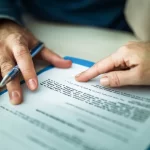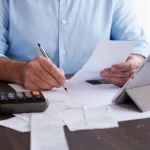An emergency fund is like a self-funded insurance policy that can help you survive unexpected expenses. Learn how to build an emergency account and deal with sudden costs without using credit cards or taking out a loan.
Start small and save whatever you can. The positive motivation you gain from reaching your first goal can propel you toward larger savings goals in the future.
1. Identify your expenses.
Having money saved can help you avoid reaching for credit cards or loans, which can quickly turn into debt. It can also give you peace of mind knowing you can afford to deal with unexpected expenses like a car repair, house repairs or a medical crisis.
It’s common to hear recommendations that you save enough for three to six months of expenses. But for many people, that total may feel out of reach.
Instead of trying to get there all at once, focus on saving a small amount each month and consistently adding to your fund over time. For example, try putting aside $5 a day, which can add up to over $2,000 in just five years. Then, set up automatic recurring transfers to help you stay on track.
2. Create a budget.
The amount you should have in your emergency fund will vary from household to household, but most financial experts recommend having enough money to cover three to six months’ worth of expenses. While this may seem daunting, it’s important to set a savings goal and work toward it. You can do this by establishing an emergency savings account that’s separate from other savings accounts and considering options such as prepaid cards.
You can also save by economizing and by directing any financial windfalls, such as bonuses or inheritances, into the savings account. The key is to keep the emergency savings account a priority so you’re not tempted to use it for non-emergency spending. It’s also a good idea to shop around for an emergency savings account that offers easy access and a competitive interest rate.
3. Set aside money.
The goal of an emergency fund is to create a buffer that can help you cope with unexpected expenses without having to resort to credit cards or high-interest loans. One way to build your emergency savings is to sock away a small amount every paycheck and keep it in a separate, high-yield savings account.
Financial experts often recommend that you save enough for three to six months’ worth of expenses, but setting up such a savings habit takes time. Start by identifying a smaller goal and work your way up, such as saving $5 per day. Reaching these goals can give you positive motivation to continue.
You should consider housing your emergency funds in a money market or high-yield savings account that offers safe, liquid access to your money, as well as a modest return on your investment. This makes it harder to dip into these accounts – as you may be tempted to do from time to time – and can provide peace of mind in the meantime.
4. Make a plan.
An emergency fund is for unanticipated expenses that can’t be planned for, such as a surprise medical bill or repair or a job loss. It’s important to keep this money separate from other savings accounts so that you aren’t tempted to use it for regular expenses.
Set a savings goal for your emergency account and work to reach it each month. You may want to start with a smaller goal, such as saving a month’s worth of expenses. This can help you build a savings habit and give you momentum to move on to bigger goals.
Choose a location for your emergency savings that is safe and easy to access. Options include money market funds or high-yield savings accounts, which can earn you some interest.
5. Don’t delay.
While unexpected expenses can be stressful, there are things you can do to prepare. Start by creating an emergency savings plan. It’s best to tuck away enough money to cover three to six months of your regular expenses.
Ideally, you should keep your emergency savings in an account that you can easily access and won’t charge you any fees or taxes upon withdrawal. This includes savings accounts, money market funds or certificates of deposit.
It may take some time to save up a substantial amount of money for an emergency fund. But the sooner you start, the more peace of mind it can provide. It can also help you avoid putting unnecessary debt on your credit card. And that’s always a good thing.













